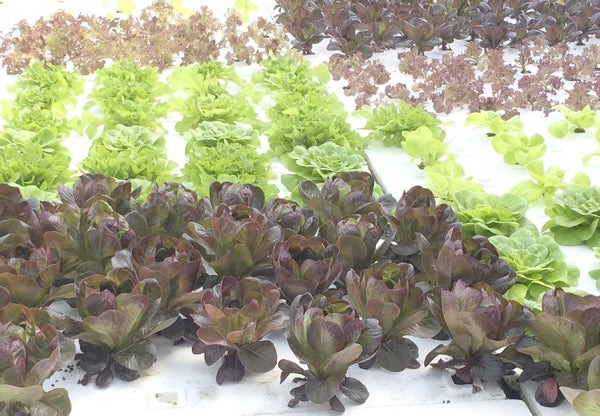Aquaponics gaining interest in our state
Published 12:00 am Friday, November 6, 2015

- Cooperative Extension Healthy-looking lettuces seem to thrive in the aquaponics system in Raleigh.
Last week, I said that I would write about a recent trip to an aquaponics farm in Raleigh. Lately, aquaponics has become a hot topic, although some have confused it with hydroponics, which is also still popular.
Hydroponics is using water as the only medium to grow plants (does not use soil). Aquaponics grows fish and then uses the “fertilized” water to help grow plants. Of course, that is the most simplistic explanation — as you will read, there are a lot more processes to go through before the water gets to the plants.
Because I have been involved with the NC Farm Schools, I have seen many graduates interested in starting an aquaponics venture. The only issue is that there are not a lot of them out there and producing crops profitably, so when we learned that NC State started an aquaponics facility, we had to check it out.
We planned it out and decided to venture up to Raleigh to see what they were doing. When we first arrived, we saw two greenhouses, one fully covered and the other with a structure covering the front. We quickly discovered the structure blocking the entrance of the second greenhouse was a method to naturally reduce aphids from entering.
Once inside the greenhouses, we were able to see the tanks of fish being grown, which consisted of sunshine bass and tilapia. What makes aquaponics unique is that the grower can receive profits from raising the fish and producing quality fruits and vegetables.
There is definitely a science to raising fish, consisting of raising them from small fry to adults in one tank, using multiple tanks to have different species of fish, and making sure that the water is routinely cleaned to provide a healthy environment. Once the waste water is removed, they have two ways of cleaning it, through mechanical and chemical treatments.
Mechanical was fairly simple, using gravity, water flow and some PVC pipes. Chemical was definitely interesting because it used chemicals and bacteria to clean the water. The bacteria also helped provide nutrients to the plants that would then receive the water.
Once the water is cleaned, it was used to start the seedlings and grow full heads of lettuce. The seedlings were started in a foam-like material that is precut so that they can easily fit into a flotation-like device that is placed in the growing pools.
The pools that the lettuce was grown in held about 18 inches of water, and it had a continuous flow of water so that nothing was left to stagnate. I was in complete awe — the lettuce was gorgeous. What was interesting was that they were growing beautiful lettuce and were able to sell every head to a local farm that then sold it to local markets.
One of the biggest concerns that the agents had was the economics of the whole system. We quickly learned that the profitability of the aquaponics system is currently being studied. However, I am pretty sure that the investment can range from boot straps to Mercedes, but I will have to update everyone once those are published.
If you would like more information on aquaponics, hydroponics, gardening, or attending the NC Farm School, contact your local Cooperative Extension Agent, Danelle Cutting, at 704-216-8970.




